Fatal attractions
How Shanghai’s cemeteries are trying to attract sightseers
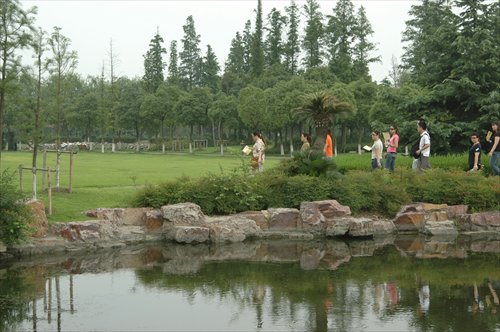
Office workers enjoy a de-stressing tour of the Fushouyuan cemetery. Photo: Courtesy of the Fushouyuan cemetery
The beautifully designed gardens and even swans make this cemetery a pleasant place to spend time at. Photo: Courtesy of the Fushouyuan cemetery The beautifully designed gardens and even swans make this cemetery a pleasant place to spend time at. Photo: Courtesy of the Fushouyuan cemetery The beautifully designed gardens and even swans make this cemetery a pleasant place to spend time at. Photo: Courtesy of the Fushouyuan cemetery The beautifully designed gardens and even swans make this cemetery a pleasant place to spend time at. Photo: Courtesy of the Fushouyuan cemetery The beautifully designed gardens and even swans make this cemetery a pleasant place to spend time at. Photo: Courtesy of the Fushouyuan cemetery
In early 2004, when the city cemetery Fushouyuan announced it would welcome tourists, it raised a storm of controversy. Many Chinese people believe that cemeteries should be desolate, grim places and certainly never tourist attractions. And Chinese culture certainly does not see visiting cemeteries for fun as a proper pastime - death is a taboo subject.
But now alongside the Fushouyuan cemetery in Qingpu district, other cemeteries in Shanghai are transforming, or have transformed, themselves into tourist attractions, regardless of traditional attitudes. Formerly only the Longhua Revolutionary Martyr's Cemetery was to be found in guidebooks or travellers' websites.
The Haiwanyuan cemetery in Fengxian district, for example, has turned itself into a Red Tourism destination by building a zhiqing (educated youth) memorial plaza and a zhiqing-themed museum to commemorate the city's 1 million zhiqing - the young people who, in the 1960s and 70s, went to work in distant rural communities.
On Chongming Island, the Yingxingyuan graveyard is planning to erect the statues of 15 local historical and cultural celebrities, and eventually transform the cemetery into a youth education and tourism center.
But celebrity statues are nothing compared to the 800-plus tombs of famous people that Fushouyuan boasts. Most of these people were born or lived in Shanghai and in 2004, the central government made Fushouyuan a humanity memorial park, and later, the International Cemetery, Cremation and Funeral Association named it "the most beautiful eastern cemetery."
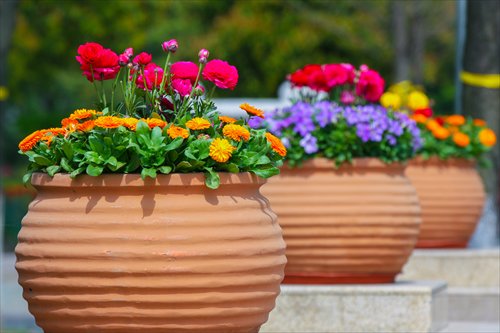
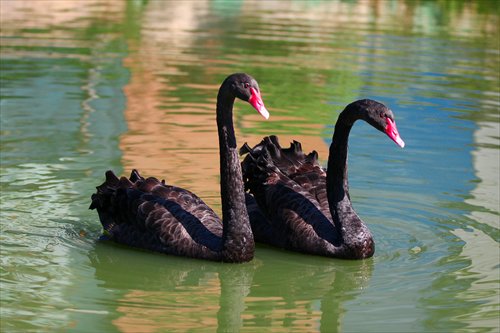
Transforming the image
But the fame and the titles have not changed traditional attitudes. City cemeteries have been working hard to transform their images but few have succeeded in attracting tourists.
"It's like we are trying to challenge traditional notions that have been deeply engrained for thousands of years," said Yi Hua, the deputy general manager of the Fushouyuan International Group. "Maybe we can succeed one day - but no one really knows when that day will come."
Yi started working at Fushouyuan in 1996 when the cemetery had only been open for two years. Although it is now a beautiful park with flower beds, groves and pavilions, in the late 1990s it was just another traditional Chinese graveyard. "You couldn't see anything there except a few clusters of tombstones jutting out of the ground," Yi said. "No one came here apart from the relatives of the dead, and it was so quiet that you could hear the sounds of the leaves falling."
All cemeteries in China looked the same before 2000 - rows of tombstones and unpruned trees. They looked unwelcoming and reinforced the view of many that they were places of death and bad luck. Yi recalls the way her parents reacted when she told them she was going to work at Fushouyuan. "They really disapproved. They thought it would be an unlucky career," she told the Global Times.
When Yi was about 10 in the 1980s, her maternal grandparents died and their ashes were buried at a local cemetery. Yi loved her maternal grandparents and wanted to visit their graves but her parents frightened her from going, telling her that anyone who visited a graveyard would have nightmares.
"I was so sad," she said. "My grandparents looked after me for years, but I wasn't allowed to visit them at the cemetery."
Years later Yi did get to the cemetery and found it was far from visitor friendly. "It was really bleak and I felt sad and lonely walking there."
It was this experience that pushed Yi into working to transform Fushouyuan into a more welcoming site. In the late 1990s she went to look at some famous international cemeteries like the Père Lachaise Cemetery in France and the Novodevichy Cemetery in Russia. There are many famous cemeteries around the world that have become tourist attractions and attract millions of visitors every year who come to admire the history, landscaping and atmosphere.
But most of Shanghai's cemeteries are less than 30 years old (many of the older graveyards were destroyed during the Cultural Revolution) and have little to offer apart from drab headstones. "If we want more people visit, first of all we have to turn this into an attractive experience," Yi said.
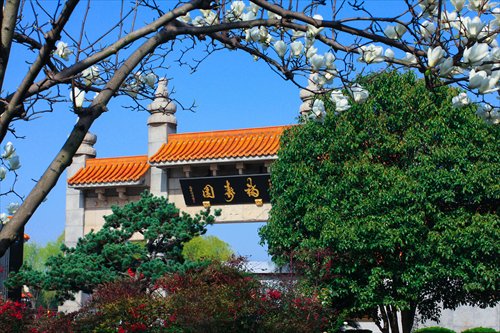
An elaborate garden
Over the past 20 years Yi and her colleagues have worked hard at transforming the place. They have introduced a range of flowers and shrubs, added pavilions, bridges and rockeries and today the cemetery looks more like an elaborate garden than a graveyard. "Visitors don't feel confronted any more," Yi said.
And Yi's team has been working to reveal some of the famous people buried there to make it a real tourist attraction. Learning from the way foreign cemeteries worked Yi and her colleagues have persuaded hundreds of families of famous people to have their tombs moved to Fushouyuan. "It's just like collecting stamps - we're 'collecting' tombs of the Shanghai celebrities in different fields," Yi said. "The more, the better."
But "collecting" famous tombs isn't easy. Especially in the beginning, when Fushouyuan was not well-known, Yi's team spent a great deal of time and energy persuading people to have their relatives' tombs moved. In 1998, when Yi went to the then Shanghai Film Association to see if they could erect a new tombstone for the famous film star Ruan Lingyu (1910-1935) - whose tomb was destroyed during the Cultural Revolution - she was quickly rejected.
"A staffer opened the door and I said I was from Fushouyuan and he slammed the door on me," Yi said. The door bruised her forehead. "I was really frustrated. The man was so upset that I was from a cemetery that he slammed the door in my face."
After Fushouyuan had persuaded people to move several famous tombs there, the work got a lot easier with people beginning to recognize that this was now a place where famous people were buried and respected.
At present there are more than 800 tombs of famous people there and the cemetery also has statues of them and a memorial wall where they are all listed.
In 2004 during the Labor Day holiday, Fushouyuan opened its gates for the first time as a tourist attraction. A year later, it had a promotional opening for stressed-out office workers. "We called it a de-stressing tour," Yi said. "Anyone who was interested could apply online to visit."
Although many of the visitors were apprehensive, they were guided carefully around the cemetery, especially to the graves of famous young people. "These visitors were all 20-something-year-olds who had never thought of the value of life or the meaning of life and death. Standing in front of the tombstones of other young people made them reconsider the value of life."
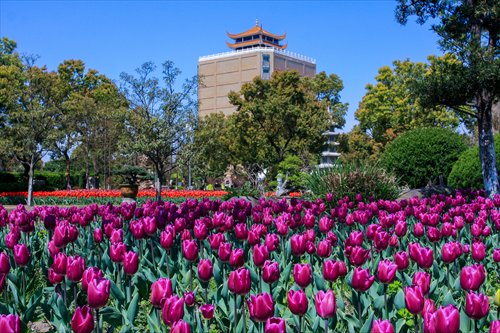
Successful tour
The de-stressing tour was successful. Later Fushouyuan offered other tours including a citywide cemetery-themed trip which included the city's other five major cemeteries.
The Haiwanyuan cemetery was on the itinerary that year. It had opened in early 1985 and was one of the oldest of the new era cemeteries in Shanghai. Although Haiwanyuan has also become a tourist spot with its beautiful landscaping and impressive zhiqing museum, it had been just like the other cemeteries before 2000 - a grim array of tombs and trees.
"When we decided to transform Haiwanyuan we considered adding something with Shanghai characteristics to it, something that would enrich the historical and cultural background of the cemetery," said Shao Hui, the director of Haiwanyuan's administration and personnel office.
That was when they thought about making it a zhiqing memorial. "Of the 15 million zhiqing in China at least 1.2 million were from Shanghai, and statistics showed that 80 percent of them had returned to the city," Shao told the Global Times. "These older zhiqing are not just a symbol of old Shanghai, but also potential clients."
The zhiqing theme was finally approved in 2008 and Haiwanyuan started to reconstruct the cemetery. A zhiqing memorial plaza, a zhiqing remembrance wall and a zhiqing museum were built in turn and a special graveyard area was arranged for zhiqing and their relatives.
The project has certainly attracted visitors. "Nowadays we have 80,000 tourists a year, and nearly 60,000 of them come specifically to visit the zhiqing plaza and museum," Shao said. In 2011 Haiwanyuan set the second Saturday in March as the Memorial Day for Shanghai zhiqing, and from then on every year on this day crowds of visitors go to the cemetery to mourn the dead zhiqing.

Not contributing
Fushouyuan now has about 400,000 visitors a year and 30 percent of them come just for sightseeing, Yi told the Global Times. Many are fans of the celebrities now buried there like the Taiwanese pop singer Teresa Teng. "These visitors don't contribute to the cemetery financially but I'm happy to see them here," she said.
At present all the city cemeteries are open to the public and don't charge admission. Although many of them are developing as tourist sites there are still many people who question whether cemeteries should be anything except solemn places of quiet respect. Some fear that crowds and noise will destroy the atmosphere for mourners.
Neither Yi nor Shao is concerned about this. "We've organized many trips to the cemetery and they have all been good," Yi said. "The participants are all well behaved."
Shao agreed. "When you walk into a cemetery you automatically slow down and lower your voice," he said. "I don't think anyone would deliberately misbehave in a Chinese cemetery."
Wang Hongjie is the director of the Shanghai Funeral and Interment Service Center and agreed that Shanghai's cemeteries were developing tourism. "It's not a bad thing, and I personally encourage them to learn from the famous foreign cemeteries and improve their environments and facilities," he told the Global Times.
But Wang warned that developing this sort of tourism could not be done too quickly. Many famous cemeteries in Western countries are found in central areas and have good transport access but most of the cemeteries in Shanghai are located in the city's outer suburbs.
And the traditional gloomy attitudes toward cemeteries still prevail. "Westerners believe that people go to heaven after death, but in China's Taoist culture, the dead have to go to the underworld and suffer torture there," Yi said. "Changing people's attitudes is never easy. We still have a long way to go."